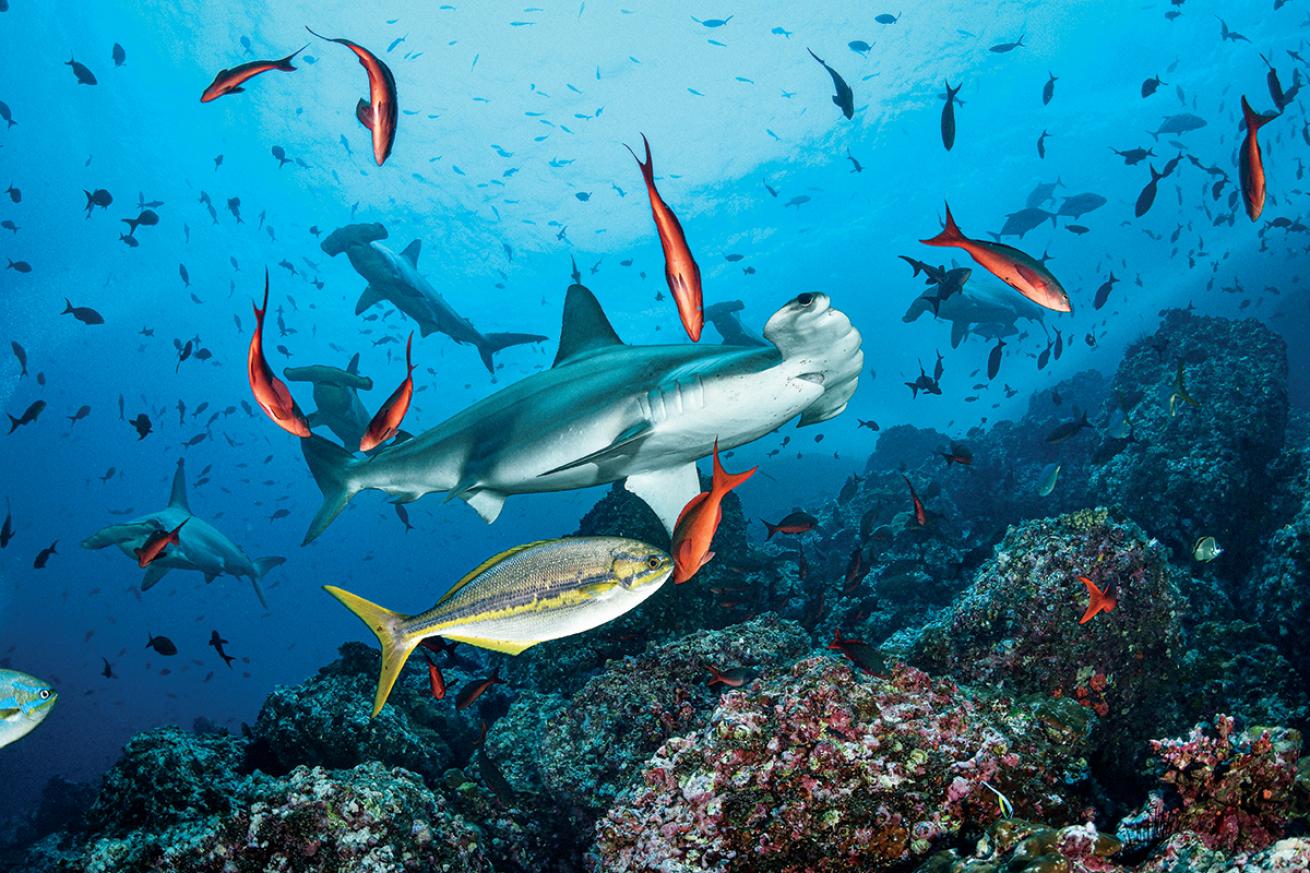Meet the Turtle Nonprofit Pushing for an MPA from Cocos Island to the Galapagos

Damien MauricScalloped hammerheads at the Isla Cocos Reserve about 350 miles from the Costa Rican mainland.
It’s no secret to divers that Cocos Island and the Galapagos Islands are hotspots for marine megafauna. On a typical dive in either region, it’s common to see whale sharks, scalloped hammerheads, sea turtles, mantas and more. Both biodiversity bonanzas are heavily protected, with dual designations as national parks and UNESCO World Heritage Sites. But endangered species don’t just hang out at one island or the other—they migrate between both areas along a submerged mountain range called the Cocos Ridge. And commercial fishing has largely unfettered access to this stretch of sea.
Todd Steiner, founder and executive director of the Turtle Island Restoration Network (TIRN), spent decades researching migrations of leatherback turtles in the region, leading him to propose the Cocos-Galapagos Swimway, a nearly 75,000-mile stretch of sea between the two parks. It’d be the first transboundary initiative connecting two marine protected areas.
The idea goes back to 2001, when the governments of Costa Rica and Ecuador signed a joint presidential declaration to collaboratively ensure protected connectivity between the Isla Cocos Reserve and the Galapagos National Park. Panama and Colombia joined the regional initiative the following year, but implementation has yet to follow. “Meanwhile, more and more species are being listed as endangered” in the region, Steiner says.
TIRN teamed up with organizations like MigraMar and the Leatherback Trust to gather data on how tagged animals move between the two protected zones. “We have six species—four sharks and two turtles—that we know are swimming and showing up in both places, and specific individuals are using both of the marine protected areas,” Steiner says.
Now, armed with a stack of biological evidence, the Swimway coalition is gathering petition signatures in both countries to illustrate public demand for implementation. The coalition has also worked with national governments directly; individual administrations have been on board periodically, but simultaneous support remains elusive. The biggest hurdles remain uncertainty about enforcing protections across such a large swath of open ocean and pushback from the commercial fishing industry.
But a breakthrough may be on the horizon. Roque Sevilla, former mayor of Quito, has been appointed by the Ecuadorian government to identify how Ecuador can expand the Galapagos reserve. He says the Swimway coalition is in the middle of negotiations with the fishing industry to increase the marine reserve from about 51,000 square miles to nearly 250,000 square miles. This expansion would complete Ecuador’s commitment to the 30x30 initiative, a global movement of countries safeguarding at least 30 percent of their national waters by 2030. At the time of publication the expansion had not been approved, but Swimway advocates hope the current Ecuadorian president will pass it before leaving office at the end of May.
Costa Rica has stated it will create a 30x30 plan, but little of its ocean is currently protected and no detailed road map to 30 percent has been publicly released.
Still, as plans are developed, the conservation community remains hopeful that the Swimway and its endangered inhabitants will soon gain these enhanced protections.










